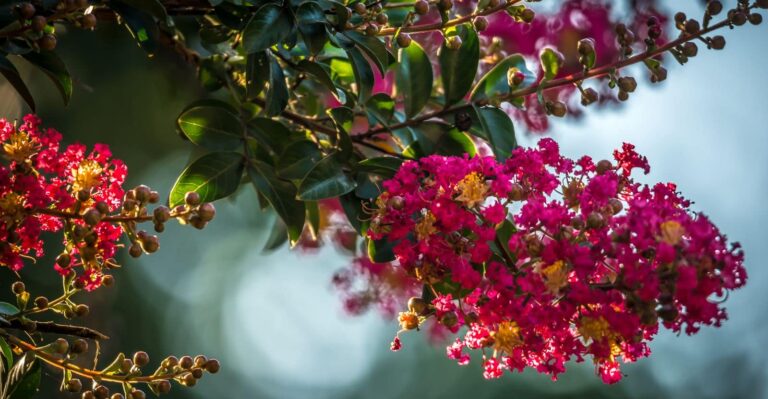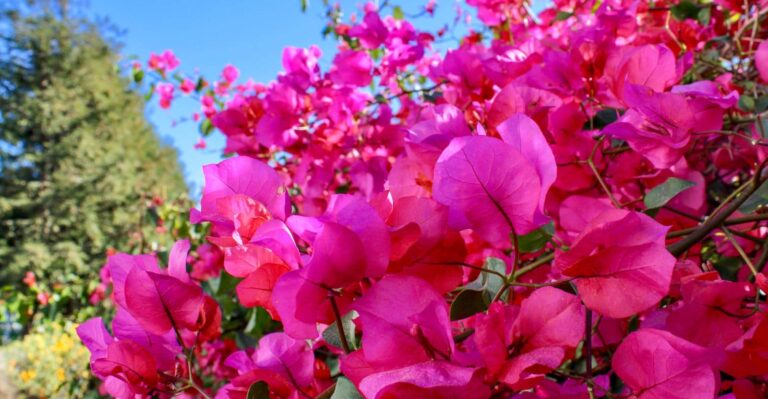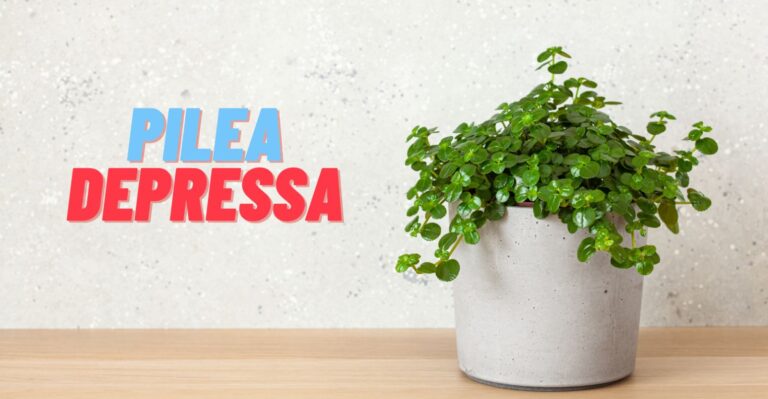Amazon has put together some great Home Gift Deals – save money and get your shopping done at the comfort of your home! Click here to see deals on Amazon
Monstera plants are often more of a challenge than a reward. They grow slowly, can be prone to diseases, and require attention. But once you’re past the learning curve, these plants can be rewarding.
Monstera albo has huge large white or pink leaves with long slender vines. This makes them a perfect choice for those who don’t have a green thumb but still want to grow something beautiful in their home. This growing guide will describe developing a monstera albo plant and its care requirements.
Let’s get started.
What is monstera albo?
Monstera albo is a plant often used for indoor and outdoor decoration plants. It has a fascinating shape and is easy to maintain. The plant is native to tropical areas of southern Mexico, Central America, South America, and the Caribbean. Some people also call it the swiss cheese plant.
It’s easy to grow, with tall stems, heart-shaped leaves, and glossy green and maroon-colored flowers. The monstera albo is a favorite houseplant due to its beautiful leaves and long stems.
The white streaks and spots scattered on the leaf are parts that lack the chlorophyll pigment. These are mutated cells that don’t let the leaf absorb the sunlight. As we know, the plant gets the green color due to the presence of chlorophyll.
As the monstera albo leaves grow in size, the fenestrations, or holes, appear in the leaves. The holes help survive its large, leafy plant during severe weather such as high wind and rainfall in its native tropical habitat.
It also resembles another great plant called monstera borsigiana. However, the most significant difference is the marking on their leaves. Monstera borsigiana albo variegata leaves have yellow markings, whereas the monstera is whiter. The leaves of albo are subject to change throughout its life.

Why is monstera albo so expensive?
Variegated monstera albo plants are a bit rare and therefore quite expensive. They’re also considered an exotic plant, even in the tropical countries where they grow naturally. These plants are gorgeous and very interesting to keep, but at the same time, they’re also challenging to keep leaves white.
The challenge is monstera albo can’t grow from seed reliably and is usually grown through stem propagation. These have a prolonged growth rate due to the lack of chlorophyll in the leaves.
The chlorophyll helps convert the sunlight into food energy for the plant. The combination of high demand and low supply causes a shortage of plant availability and higher price.
Another difficulty with albo is the variegation caused by mutated cells isn’t evenly distributed throughout the plant. The amount of light that can reach different areas may vary from leaf to leaf.
This can create variations in the number of reproductive tissues created from each plant, thus making it difficult to continue propagating high-quality monstera albo plants.
Some online auction sites have these sold for as much as $5000. But most online retailers will sell you cutting anywhere from $100 to $1000 depending on the quality and maturity of the plant.
What are the differences between an Albo Variegata and a Thai Constellation Monstera?
The structure of Monstera albo and the Thai constellation monstera is similar, but the latter has shorter leaves. Monstera albo has larger leaves with around 15 or 25 cm long petiole, while the Thai constellation has 10-15 cm long petiole.
The monstera houseplants variegation in the albo variety is unstable as it quickly reverts to all green leaves. In contrast, the variegation on the monstera Thai constellation is more stable and often doesn’t revert to all green.
The coloration on the plant can look similar, especially in the newer and smaller leaves. For instance, both plants have jade-green leaves. Monstera variegata Albo plants, however, have mottled or blocky transparent white coloring.
The Thai constellation, on the other hand, has creamy color patterns that are paler than the traditional pattern. In a sense, Albo Variegata and Thai constellation are slow grower plants, but they differ in their characteristics, such as the amount of variegation and cost.
How fast does monstera albo grow?
The Monstera plants grow slowly for their first few years, so you’ll have to wait a long time before you start seeing any results. These Swiss cheese plants lack chlorophyll in the leaves, which causes stress to the plant as they don’t have much green chlorophyll area for the photosynthesis process.
Monstera albo grows 2-3 feet per year under suitable conditions. It can grow well in the shade but needs light to bloom. The growth rate of albo’s variegated leaf depends on the plant’s overall health. The variegation varies from one leaf to another, constantly changing even within the same leaf.

How to care for monstera albo?
Albo monstera is an exotic plant that grows best in warm tropical regions and is the most popular as an indoor plant where it receives bright indirect light.
The attractive waxy leaves appear like huge green banana leaves. Monstera albo leaves are tough and leathery, so they can withstand foot traffic, making them a good choice for a houseplant.
These aren’t hard houseplants to take care of, but regular maintenance is a must to keep them happy and healthy. They’re more challenging to grow than other plants as they need indirect sunlight and humidity.
They prefer well-drained soil, and the plant shouldn’t be left to sit in moist conditions. The ideal potting mix for a monstera albo consists of peat moss, perlite, coco coir, and compost. I like this potting mix that contains everything you need (Amazon link)
As monstera albo lacks sufficient chlorophyll for photosynthesis, you should maintain a fertilizing schedule. If necessary, it will need extra nutritional support but not too much. You can apply fertilizer every 5 to 6 weeks in the later growth, such as spring to summer, but don’t need fertilization in the winter.
To keep your plant’s leaves free of dust, it’s beneficial to dust off the leaves a few times per month. Some people even like rinsing their monstera in the bathtub. You’ll want to pursue ongoing pruning to keep your variegation from reverting fully to green.
You should remove partially or completely green stems to encourage the plant to continue growing its pure white leaves. If you don’t prune it on time, the branches will return fully to peak green shortly.
However, don’t prune all the green leaves; otherwise, the plant won’t be able to do photosynthesis to produce energy, and it may wilt. Maintain the proper balance of green and white leaves in the plant to keep it healthy.
How often to water monstera albo?
Monstera albo is a slow-growing plant that likes moist but not over-drenched soil. You should water once or twice a week during the summer. You should only water the plant when the top few inches of soil feel dry.
Although this is a tropical plant, they’re pretty hardy and can survive well in drier than permanently moist soil. When planting indoors, people often overwater the monstera plant, increasing the risk of root rot and generating fungus gnats.
Monstera albo thrives in a highly humid environment. You can set a humidity range between 30%-65% for indoor plants, usually ideal for monstera albo.
You can also place a couple of rocks in the saucer pan and keep it wet to maintain the humidity or group other aroids and humidity-loving plants closer to albo plants to help them grow. You can also place an indoor humidifier near the plant for better humidity control.
How much light does monstera albo need?
Monstera albo needs 8-10 hours of bright indirect sunlight per day. Light is essential for all living things, and so is the case with this plant. But you should be careful and don’t place it in direct sunlight because this will cause the foliage to burn.
The variegated parts of albo plants are more susceptible than others to sunburn. However, if you don’t provide sufficient light, the leaves will change to green as the plant pushes out more chlorophyll to sustain itself.
How to root a monstera albo cutting?
The monstera albo cutting can be rooted in water or soil, but the best way to do it’s by using water. You can take the cutting from the parent plant and make sure it’s at least 4 inches long. Then place the cutting into a pot with enough water to stay submerged for at least weeks before planting it in the soil.
Make sure to regularly change the water every few days to keep water free from bacteria and fungi. If you don’t want the hassle of either, you can try air layering propagation.
It’s pretty easy to do as you need to make a small incision below the node and wrap the area with damp sphagnum moss. You keep it moist every few days, and in a few weeks, healthy aerial root develops around the nodes that you can cut off and plant in potting soil.
Where to plant a monstera albo cutting?
Choosing a place to plant a monstera albo cutting isn’t difficult. The hard work comes when you have to maintain it. There are three places to plant the cutting: indoors, outdoors, or on your terrace. The first two options are better for those living in temperate climates, while the third option is perfect for those living in hotter regions.
Remember that you should be planting it in an area with a lot of moisture and humidity. If the air is dry and cool, the plant won’t grow well. It’s best to plant it in a pot, where it can receive the right amount of moisture and sunlight. Also, make sure that the pot has suitable drainage holes.
You can place it indoors near the sunny window where it can get indirect sunlight or outdoor in a sheltered spot with access to water.

Why is my monstera albo turning brown?
It’s normal for your plant to turn color as it grows and matures. However, some people are concerned that their albo plant color isn’t normal. Some of these changes are natural, and others may result from something that isn’t right with the plant.
The most common reasons are the plant not getting sufficient water or having low humidity. Make sure you water it regularly when you feel the top few inches of soil get dry. But be careful and not overwater it as it increases the risk of root rot.
You should remove and cut off any monstera leaves that turn brown or yellow from the mother plant. If you overfeed the plant with fertilizer, it may cause algae to develop around monstera roots. Try cutting back on the fertilizer and see if that helps. Check for spider mites for any pest infestation.
Where to buy monstera albo?
Monstera albo plants are relatively uncommon and may be expensive. Most nurseries only have tiny plants, or you have to wait to grow one from a cutting. Luckily, they’re also relatively easy to grow. But where to buy one?
The best place to buy monstera is online retailers unless you have a nearby nursery with a high-quality plant. After reading reviews and how the supplier handles any complaints, we recommend that you buy it from a trustworthy source.
Amazon and Etsy are good places to check these plants. Some Facebook groups also sell these plants that you can check and are usually cheaper than the professional seller.
If you’re thinking about buying an exotic monstera, be aware that most monstera can’t be grown from seed-so be wary of people who tell you they’re selling seeds. If you’re buying a cutting, make sure it has one node. In an albo plant with damaged or no node, the cutting will never grow roots to sustain itself.
Finally, avoid a variegated monstera cutting that is entirely white or variegated. The cutting won’t survive due to the lack of chlorophyll needed by the plant. You can try the other monstera plant varieties such as monstera deliciosa, monstera adansonii, and standleyana.
Conclusion
In conclusion, Monstera albo is an easy-to-grow, low-maintenance houseplant that doesn’t require a lot of water or soil substrates to grow.
It’s an excellent plant for beginners and can be produced in various conditions. So if you’re looking for an exciting and exotic houseplant with a bit of plant care, Monstera albo is an excellent option.

Don’t forget to share this post







